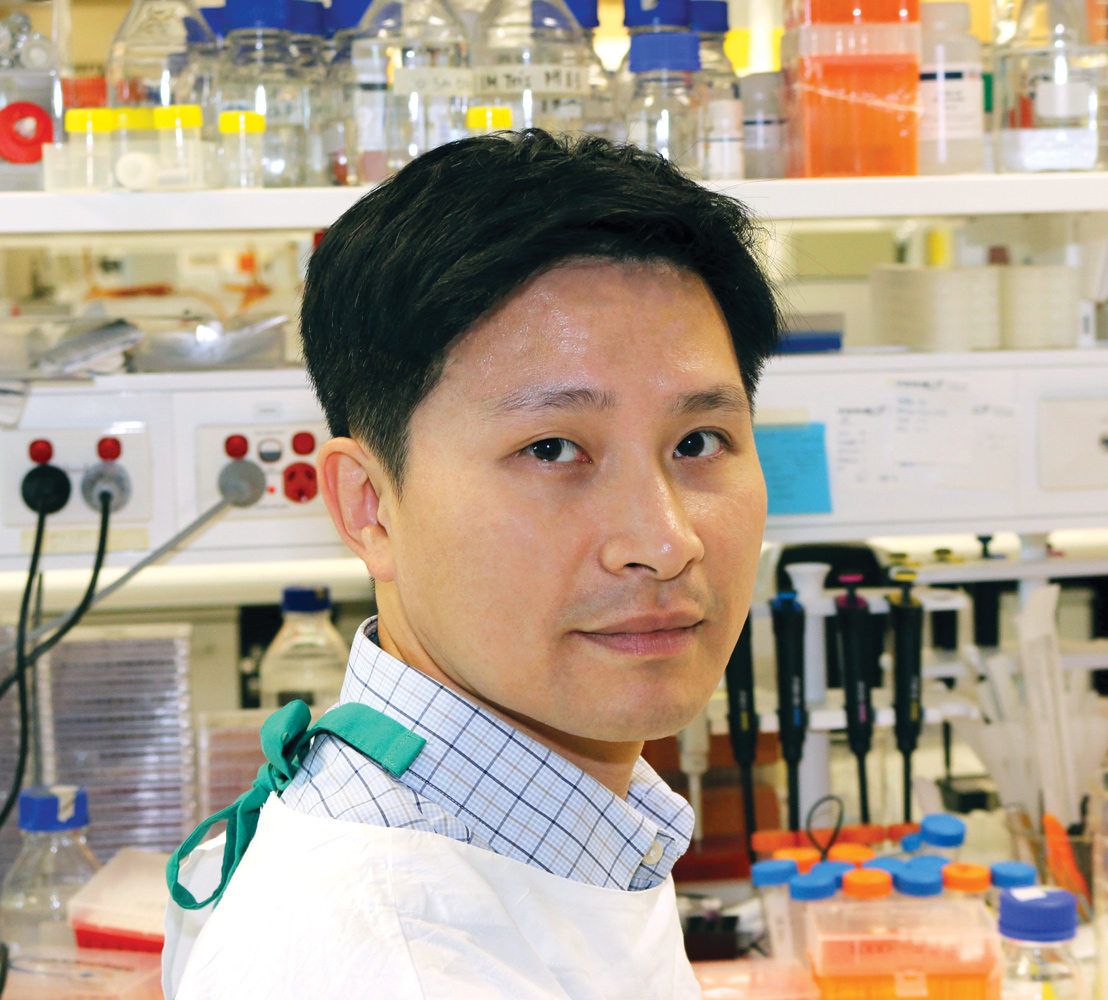Scientific discoveries often emerge like a patchwork quilt, with one field of research layering atop another in surprising ways, and a biomarker for ovarian cancer may be one of them.
The media was recently filled with stories about the development of a ‘cancer vaccine’ designed to help the body’s immune system fight off melanoma. Cancer treatments like these often use circularised RNA molecules to train the body’s immune system to identify the cancer. It’s these molecules Associate Professor Jason Lee hopes will hold the key to finding patients with early-stage ovarian cancer – when they have the best chance of survival.

A/Prof Lee now wants to sew together different small pieces of research, published in the past five years, on the role of these molecules in ovarian cancer. Thanks to an Ovarian Cancer Research Foundation grant of $852,343, his team may be able to complete the quilt.
“We want to show expression of circular RNAs from the ovarian tumour, and how much of that is actually found in the blood,” says the cancer epigeneticist, who leads the Epigenetics and Disease Group at QIMR Berghofer and is an adjunct associate professor at University of Queensland and Queensland University of Technology.
A/Prof Lee’s dream is to be able to detect the presence of ovarian cancer using just a few drops of a patient’s blood.
Until recently, people did not think of RNA as a possible biomarker because the molecule is especially fragile. The standard RNA we are more familiar with is linear and degrades over time from the ends. But circular RNAs don’t have ends, making them far less likely to degrade, and the “perfect candidate” for testing and development.
“It makes them much more stable in blood, urine, saliva, sweat, and so on,” he said.
Why early is best
Research has shown these molecules are found at different levels in cancer patients, so if the research team can identify the right circular RNAs for ovarian cancer, they could be key to a non-invasive, easy to collect method of testing people at the earliest stages of disease.
People identified with earliest-stage ovarian cancer have a 90% survival rate at five years, but this plummets to under 30% if diagnosed in the later stages. This solution, however, reaches beyond the goal of an early detection test.
“If some of the circular RNAs are highly expressed in ovarian cancer, then is it possible for us to develop a therapy to block that elevation? That could actually treat ovarian cancer or be hopeful as a as a prophylactic kind of preventative medicine,” A/Prof Lee said.
The team must first find the right molecules, a task that has led the professor to be affectionately being called a “vampire” because the first step in the process is to get as many blood samples as possible from people with ovarian cancer.
The team is currently analysing the blood of patients who had aggressive ovarian cancer and searching for distinct circular RNA from the tumour itself. The next step will be to work with an epidemiologist to identify those at a high risk of developing the cancer, such as people with a family history or BRCA gene mutations, to see how early circular RNA can be detected.
Screen testing?
If successful, A/Prof Lee hopes that high-risk women can be targeted with a screening program.
A 24-hour turnaround test would be a world away from the MRI and PET imaging tests women must currently undergo and could be used in conjunction with the standard tests that patients with a previous cancer already have done.
“By taking a simple blood test, we can actually see whether the cancer is coming back and at what stage,” he said.
A/Prof Lee has been awarded another grant from PanKind Australia – the Australian Pancreatic Cancer Foundation – for the early detection of that cancer.
The discovery of such a biomarker could also help in the maintenance and surveillance of other cancers such as ovarian, melanoma, breast or lung cancer, in patients who often have blood work taken as part of their management after remission.

